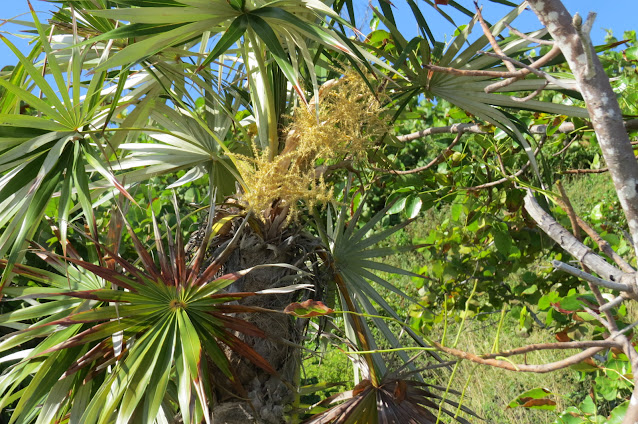Tuesday November 17th
At the time of the Pleistocene Epoch, the sea level around what is now Florida fell and rose several times as the North American Ice Sheets variously grew and melted. At one point, some two million years ago, the Florida peninsula was almost completely submerged. This event left exposed only a series of small islands, which are the Sand Hills and Florida Scrub country found in central Florida today. Geologically, the zone is referred to as the Mid-Florida Ridge, or as the Lake Wakes Ridge.
 |
Florida Scrub Jay at Lake Wales Ridge WEA
|
The surviving, much has been lost to development,
Florida Scrub ecosystems are very unique with some flora and fauna found nowhere else. The most well known example is our only endemic bird, the Florida Scrub Jay. The Lake Wales Ridge also features endemic lizards in the
Sand Skink and the
Florida Scrub Lizard. And lots of endemic and some vey rare flora.
 |
Faey's Palafox
|
Yesterday I visited the Lake Wales Ridge WEA - Lake Placid Scrub Tract, which is near Lake Placid and an excellent example of Florida Scrub. Was greeted by a pair of Florida Scrub Jays at the trail head.
 |
Florida Scrub Lizard
|
 |
| Florida Scrub Lizard |
Some of the flora found in this ecosystem included Sand Live Oak, Florida Scrub Oak, Scrub Palmetto, Sand Heath, Scrub Hickory, Rusty Lyonia, Sand Pine, Florida Scrub Bluecurls, Highlands Scrub Hypericum, Fringed Star Grass, Fringed Jointweed and Sandhill Wireweed
 |
Sand Live Oak
|
 |
Florida Scrub Oak
|
 |
Scrub Palmetto
|
 |
Sand Heath
|
 |
Scrub Hickory
|
 |
Rusty Lyonia
|
 |
Sand Pine
|
 |
Highlands Scrub Hypericum
|
 |
Florida Scrub Bluecurl
|
 |
Fringed Star Grass
|
 |
Fringed Jointweed
|
 |
Sandhill Wireweed
|
















































